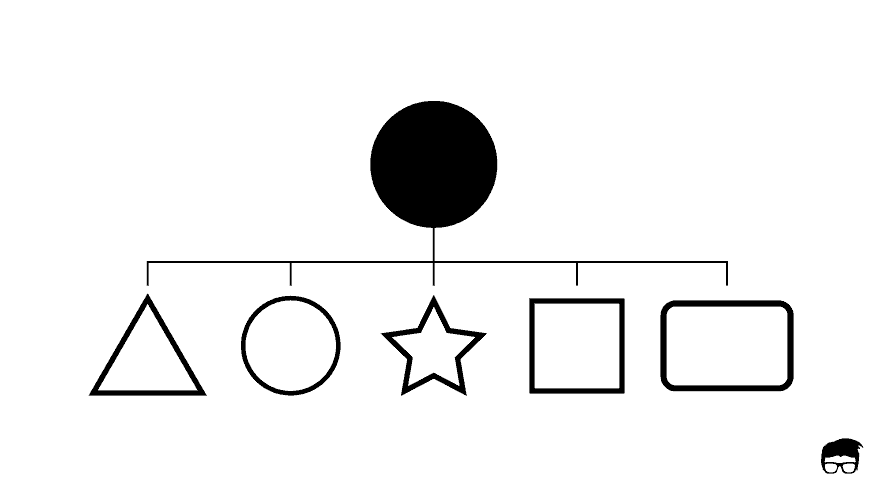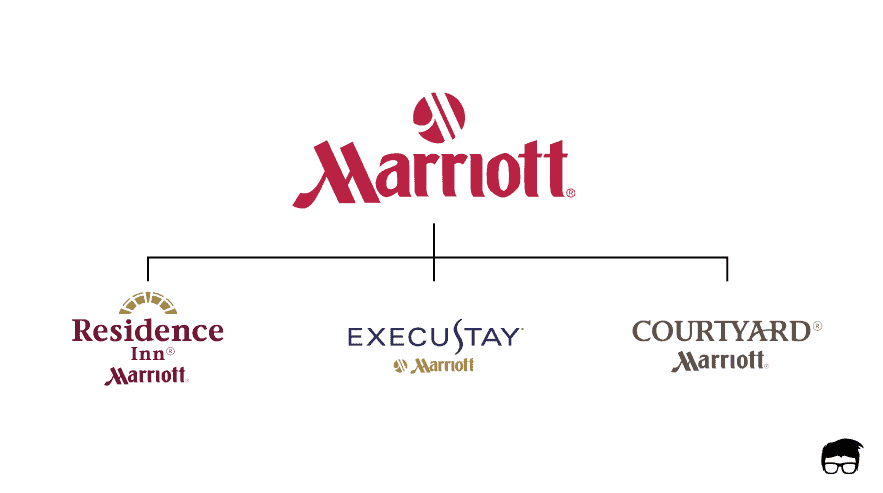Expansions, acquisitions, mergers and other such strategies, although good for the company in the long run, create a lot of clutter and confusion in the minds of the customers as to what belongs to the company and what not.
This confusion of whether the product belongs to the brand they follow or not reduces the target audience’s willingness to buy and often lead to many sub-brands being unnoticed by the target segment.
However, marketers and other employees of the companies are not able to sense this confusion from the inside as they are accustomed to how things are within the company.
The only way to sense and resolve the confusion is to get a clear view of outside the walls and organise brand outlook which specify the different subsections of the brand and connect it with the main brand and other sister brands. This is the brand architecture.
What Is Brand Architecture?
Brand architecture is an organized structure of the company’s portfolio of brands, sub-brands, and other offerings.
In simple terms – It shows how the brands, sub-brands and other offerings of the company are organized and how they relate to each other.
Brand architecture is just like the family tree you used to create for your school projects. You specify the master brand (the grandparent) and move downwards by drawing its relations with other brands and their interpersonal relations as well. Everyone on that tree is related, but everyone is still unique.
Components of Brand Architecture
Brand architecture includes a master brand, brand extensions and sub-brands (and even sub-sub-brands). Here’s a brief explanation of what these brand architecture components are:
- Master Brand – it’s the top-level corporate brand, also called the parent brand, which encapsulates all the offerings of the company. Usually, the parent company’s brand name forms the master brand.
- Sub-brand – a sub-brand is a product or service brand which is affiliated with the parent brand but has its own brand name and identity.
- Brand extension – brand extension refers to the process of using an established brand name on new products to increase sales.
Importance of Brand Architecture
Brand architecture is how the brands within an organisation are related and how they interact with each other. It is created by keeping the target market’s perspective in mind.
Brands need to create a brand architecture as it helps them to –
- Stay organised internally – looking at the brand with the eyes of the customers helps to find out the loopholes in organisation structure and the communication strategies and helps the brand to stay organized internally.
- Manage perception – Developing brand architecture makes it easier to manage the outside perception about the brand, its offerings, and their relations with each other.
- Create Synergy – Having an organised brand architecture creates a synergy among the child brands and the parent brand and help the organisation deliver against a larger brand promise.
Brand Architecture Types
Architecture is an important brand strategy tool which studies and defines the relationship of the parent brand and its child brands. Here are the different types of brand architecture which exists in the market today.
Branded House
Branded house, also known as monolithic brand architecture, is the most common type of brand extension where the master brand is always present and its name is linked to and leveraged by the extensions.
In simple terms, the company itself is a brand and all the products and services are its extensions or subsets.
An example of a branded house is Google and its extensions. Usually, Google follows the branded house brand architecture strategy for its new offerings and prefixes G or Google before such extensions; examples being Gmail, Google Drive, Google Maps, Google +, etc.
House Of Brands
The house of brands strategy, also called pluralistic brand architecture strategy, uses a different approach than the branded house. In this brand architecture strategy, the parent brand owns and manages many sub-brands who in-turn have their own unique brand identity.
In simple terms, the company markets a range of separate brand names which have their own separate identities in the market.
These sub-brands may or may not operate in the same industry, but they do have an identity and positioning which is substantially different from other sub-brands and/or maybe the parent brand.
An example of the house of brands strategy is P&G which is the parent brand behind Tide, Duracell, Pampers, Pringles, etc.
Endorsed Architecture
An endorsed architecture includes individual and distinct brands which are linked together by an endorsing parent brand.
In simple terms, the offerings have their own brand identity and market presence but the emphasis is given on the parent corporate brand which lends its positioning to the sub-brand. You’ll often find the suffix ‘brought to you by’ or just ‘by’ in an endorsed architecture strategy. Many times, the brand’s are prefixed by the corporate brand as well.
Such a strategy, however, makes it hard for the sub-brands to pave their own unique position in the market. A good example of an endorsed brand architecture strategy is the Marvel Universe. Movies like Iron Man, Spider-Man, and Ant-Man, etc. even though have their own identity and market presence in the market, they got more traction just because they were associated with the Marvel Universe.
Another example of such a strategy is Marriot. The sub-brands like Fairfield, TownePlace and Moxy enjoys a good image in the market just because they are endorsed by Marriot.
Hybrid Architecture
Hybrid brand architecture is a mixture of two or more types of brand architectures.
A perfect example of a corporate brand using a hybrid architecture is Microsoft. The company uses a branded house strategy for its Windows and Office offerings and has a totally different house of brand – Xbox when it comes to gaming and gaming consoles.
The Benefits of a Strong Brand Architecture
As a general rule, if a brand has more than one offerings which have their own identity, developing a brand architecture will have numerous benefits. Following is the list of such benefits of brand architecture –
- Clarity in the marketplace – Having a well-structured brand architecture increases the clarity of brands offered and their relation with each other. This not only clears many doubts of the internal audience but it also helps in making better decisions to inform the marketplace about what the company’s communication strategy originally lacked.
- Synergy among brands – Brand architecture lists the relationship between different sub-brands and the master brands which eventually creates a synergy among the offerings and help the company communicate about combined solutions and how these brands complement each other (cross-selling).
- Target specific customer segments – Brand architecture effectively segment the target market and makes it clear what offering serves which segment. This often helps the company in making effective marketing strategies for brands which seem similar.
- Clarity in positioning and communication – It’s easier to develop positioning and communication strategies for each sub-brand and brand extension if the company has a well-structured brand architecture.
- Enhance consumer awareness – Brand architecture requires the company to look with the eyes of the customers. During the brand architecture process, the problems in the present marketing and communication strategies can be pointed out and customers can be made aware of the offerings they didn’t know were offered by their favourable brand.
- Build & enhance brand equity – Brand architecture also helps the company make strategies to build and enhance the brand equity of its sub-brands. It also lets the organisation lend its corporate brand equity to its offerings.
Go On, Tell Us What You Think!
Did we miss something? Come on! Tell us what you think about our article in the comments section.
A startup consultant, digital marketer, traveller, and philomath. Aashish has worked with over 20 startups and successfully helped them ideate, raise money, and succeed. When not working, he can be found hiking, camping, and stargazing.









![What Is Brand Strategy & How To Develop One? [Ultimate Guide] BRAND STRATEGY](https://www.feedough.com/wp-content/uploads/2019/11/BRAND-STRATEGY.webp)







